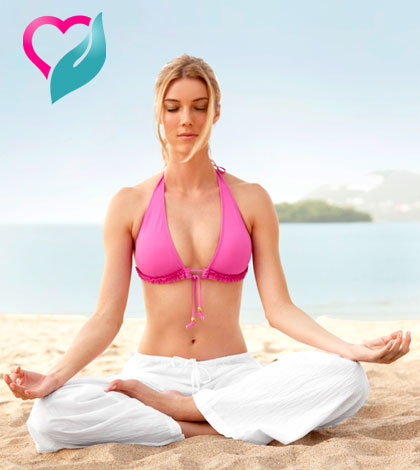Cervical spondylosis is a disease of modern lifestyle. I t is brought upon by sitting hunched over computer screens or by reading lying down. If a person has a simple stiff neck, simple yoga exercises of stretching are used to increase the flexibly of neck.
[wp_ad_camp_1]
What is cervical spondylosis ?
To an extent, we all develop a degree of degeneration in the vertebrae and discs as we become older. As the ‘discs’ degenerate, over many years they become thinner. Sometimes the adjacent vertebrae develop small, rough areas of bone on their edges. The nearby muscles, ligaments, and nerves may become irritated by these degenerative changes which can cause troublesome symptoms.
[wp_ad_camp_4]
Symptoms of Cervical Spondylosis
- Neck pain (may radiate to the arms or shoulder)
- Loss of sensation or abnormal sensations of the shoulders, arms, or legs
- Weakness of the arms or legs
- Neck stiffness that progressively become worse
- Loss of balance
- Headaches, particularly in the back of the head ,Muscle spasms
- Loss of control of the bladder or bowels (if spinal cord is compressed)
- You may feel or hear grinding or popping in the neck when you move.
- Permanent disability (occasional)
- General tiredness and anxiety – can be present.
Yoga for cervical spondylosis
Yoga is a discipline that involves physical and mental practices. It originated in India more than three thousand years ago. It is extremely useful for cervical spondylitis as it can be used to build strength and stamina through exercises called ‘asanas’, and provide spiritual healing as well, through breathing techniques known as ‘pranayama’.
In yoga, the intervertebral spaces are widened by pulling the trapezius and other muscles downwards. This is yogic traction. This lengthens the trapezius for it is along the line of gravity . Very little is achieved by conventional traction, where the muscles will telescope into each other again.
There are many specific asanas which are quite helpful in cervical spondylitis. Remember, people with cervical spondylitis should not do any forward bending asanas.
[wp_ad_camp_2]
1. Halasana
To begin with the asanas, ‘Halasana’ or the plough pose requires you to lie on your back flat, and then lift your legs behind your head. In this pose, nerve compression in the neck is released, freeing this area from any stiffness and tension.
Procedure
- Spread a soft blanket.
- Lie down on it in the usual way.
- Place both hands on the sides in the usual way, palms facing the ground.
- Raise both the legs evenly without bending when the legs are raised the hands should not be taken from the ground.
- Making a curve of the spine bring the toes towards the ground away from the head.
- Bring the legs further so that the toes touch the ground.
- Breathe slowly during asana.
- Then come to the original position.
- This asana can be practiced in three stages. At the first stage raise the legs half way. Then in the second stage give a bend to the spine so that the toes are nearer to the ground. In the third stage touch the ground with the toes.
Benefits
The spinal region get much benefit. This asana removes lethargy. Chronic constipation is removed. Wind trouble in stomach will go away. Liver trouble will be cured.
Note: Due to physical shape, some may not be able to take the legs, towards back position. Such persons can adopt this easy way. After lying down raise both the legs to the possible extent giving a gap of two feet or so from the ground. Then bring the legs to the original position. Repeat this same six or eight times. This form of practice will enable to bring the legs towards back.
Cautions: Do not practice this asana when you have diarrhea or neck injury. Women should not do this pose during Menstruation and after they become pregnant. Avoid jerks or speedy movements while doing this asana as it might cause some injury to the backbone. People with asthma & high blood pressure problems should practice this pose with the legs supported on props.
[wp_ad_camp_3]




























